What Is Foreign Exchange?Introduction to Foreign ExchangeConverting one country's currency into another is known as foreign exchange, or forex. A nation's currency is valued in a free economy by supply and demand. In other words, the value of a currency may be linked to another nation's currency, such as the dollar or major currencies. The government of a nation may also determine the value of its currency accordingly. 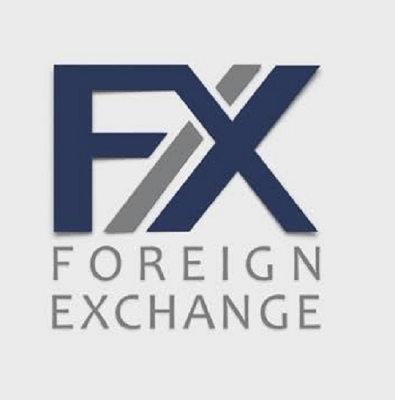
The foreign exchange market, often known as the currency or Over-The-Counter (OTC), is a decentralized global marketplace for exchanging currencies. For every currency, exchange rates are set by this market. It covers all facets of purchasing, selling, and exchanging currencies at established or current rates. It is the world's largest market in terms of trade volume, followed shortly by the credit market. The bigger multinational banks are the key players in this industry. Except on weekends, financial hubs worldwide serve as the focal point for trading between buyers and sellers. Since currencies are constantly exchanged in a couple of sets, the foreign exchange market establishes the relative worth of a currency rather than its absolute value by establishing the market price of one currency when purchased with another. However, many nations freely exchange their currencies with those of other nations, which causes ongoing volatility. Through financial institutions, the foreign exchange market functions on several levels. Behind the scenes, banks work with the selected group of financial institutions known as "dealers", who conduct substantial foreign currency trading. This unregulated sector referred to as the "interbank market", is where most foreign currency brokers operate. Hundreds of millions can change hands in very sizable trades between foreign exchange brokers. Forex has few (if any) regulatory entities overseeing its operations since there is a sovereignty issue when dealing with two currencies. The 1970s saw the formation of the current foreign exchange market. Following WWII (World War II), the Bretton Woods system of monetary management, which established the guidelines for trade and financial interactions among the world's major industrialized nations, imposed limits on foreign exchange transactions for about thirty years. Countries progressively shifted from the old exchange rate system, which remained set by the Bretton Woods system, to floating exchange rates. Factors Affecting Currency ValueMarket dynamics based on commerce, investment, the tourist industry, and geopolitical risk decide the value of any given currency. For instance, if a visitor travels to a new nation, they must make purchases in that nation's currency. A visitor must thus convert their native cash for the domestic currency. Such an exchange of currencies is a type of demand factor for a certain currency. When a foreign firm looks to conduct business with the other in a certain nation, this is another significant demand driver. The local firm's currency will often be required from the international company for payment. Other times, it would be advantageous for an investment firm from one nation to invest in another; in such cases, the investment would also need to be conducted in the local currency. These demands result in a demand for foreign exchange and add to the markets' enormous scale. Bank-to-bank transactions involving foreign exchange are governed by the Bank for International Settlements (BIS). HistoryAncientAncient times saw the beginning of currency exchange and commerce. In the period of the Talmudic texts, money changers were those individuals who assisted others in exchanging money while either receiving a commission or charging a fee, living in the Holy Land (Biblical times). These individuals used city booths and, during feasts, the Court of the Gentiles in the Temple. In more recent ancient times, silversmiths and goldsmiths were also money changers. The Byzantine government maintained a monopoly on currency exchange during the fourth century AD. In ancient times, exchange played a significant role in commerce, allowing people to purchase and sell goods, including food, ceramics, and raw resources. A trader would certainly exchange fewer Greek gold pennies for some Egyptian ones or more tangible items if a Greek coin contained more gold owing to its size or composition than an Egyptian one. This is why most of the world's current currencies have their value pegged to a certain amount of a recognized standard like silver or gold at some time in their history. Medieval and LaterDuring the fifteenth century, the Medici clan was compelled to build banks in distant countries to convert currencies on account of textile traders. The Nostro account book, which had two columned entries displaying quantities in foreign and local currencies and information on maintaining an account with a foreign bank, was designed by the bank to ease commerce. Amsterdam had a thriving foreign exchange market in the 17th (or 18th) century. The foreign exchange occurred in 1704 between representatives working for the Kingdom of England and the County of Holland. Early ModernAround 1850, the main currency dealer in the USA was Alex. Brown & Sons, who mainly dealt with foreign currencies. Later, J.M. do Espirito Santo de Silva requested and received authorization to operate a foreign currency exchange firm in 1880. According to some sources, the introduction of the gold standard in 1880 marked the start of modern international exchange. International trade was far less tightly regulated before the First World War. Countries rejected the gold standard monetary system because of the start of the war. Modern to Post-ModernBy the end of 1913, the pound sterling was used in over half of all foreign exchange transactions. From 3 in 1860 to 71 in 1913, foreign banks were functioning within London's limits. However, there were just two foreign currency traders in London in 1902. Paris, New York City, and Berlin were the cities with the most active currency trading at the beginning of the 20th century; Britain stayed mostly unengaged until 1914. In London, 17 foreign exchange dealers were involved between 1919 and 1922, and 40 enterprises were in the exchange business in 1924. After World War IIThe Bretton Woods Agreement, signed in 1944, permitted currency fluctuations within a limit of ±1% from the par exchange rate. The Foreign Exchange Bank Regulation was first adopted in Japan in 1954. As a result, by September 1954, the Bank of Tokyo was a major hub for currency trading. Japanese legislation was altered between 1954 and 1959 to permit foreign currency transactions in many Western currencies. The Bretton Woods Agreement and fixed exchange rates were abandoned by U.S. President Richard Nixon, eventually leading to a free-floating monetary system. The Smithsonian Agreement permitted rates to vary up to 2% when the Accord expired in 1971. The U.S. Federal Reserve's international activities in 1961-1962 were not very high. After discovering that the Agreement's parameters were unworkable, those in charge of managing exchange rates stopped doing so in March 1973. At that point, none of the world currencies were sustained with the ability to be converted into gold; organizations instead relied on currency reserves. After 1973State regulation of foreign exchange markets was abolished in industrialized countries in 1973, marking the start of the era of fully floating and comparatively open markets. According to some accounts, U.S. retail consumers exchanged their first currency pair in 1982, and more currency pairings were available the following year. The People's Bank of China began implementing modifications in 1978 that made it possible for some domestic "enterprises" to engage in forex trading as of 1 January 1981. The South Korean government abolished its restrictions on foreign exchange sometime in 1981 and allowed for unfettered commerce for the first time. Moreover, the nation's administration agreed to the IMF trade quota for the year 1988. Iran switched several diplomatic agreements with nations from oil barter to currency exchange in 1991. Market Size and LiquidityThe most liquid global financial market is the foreign currency market. Governments and banks, private banks, other investment firms, financial firms, currency speculators, other businesses, and private people are some notable examples of traders. The Bank for International Settlements, as the conclusion of 2019's Triennial Central Bank study, estimated that in April 2022, the current average revenue would possibly reach $7.5 trillion, up from $1.9 trillion in 2004. 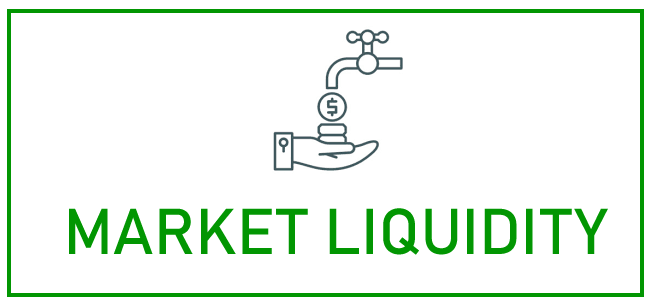
Foreign exchange is handled in an open-market market whereby the brokers/dealers directly communicate with each other; there isn't any central exchange or clearing house. The United Kingdom, particularly London, is the largest geographic commercial hub. The United Kingdom was the world's most significant hub for foreign exchange trade in April 2022, accounting for 38.1% of the total. Due to London's market dominance, the listed price for a certain currency is often based on the London market rate. On their exchanges, most industrialized nations allow trading in derivative goods (including futures and options on futures). All of these wealthy nations already have financial assets that are completely convertible. Due to capital controls, several governments in developing economies do not permit foreign exchange derivative contracts on their exchanges. Derivatives are being used more often in several growing economies. Despite having certain capital controls, nations including South Korea, South Africa, and India have developed currency futures markets. From April 2007 to April 2010, there was a 20% growth in foreign exchange trading, which has more than quadrupled since 2004. The rise in turnover may be attributed to several causes, including the growing significance of foreign currency as an asset class, greater trading activity by high-frequency dealers, and the advent of shareholders as an important market sector. Because of the tooth of tension of electronic execution and the wide range of available execution venues, transaction costs have decreased, market liquidity has grown, and various client types are participating more actively. Retail traders may now engage more easily in the foreign currency market through electronic trading using the respective web portals. Market ParticipantsUnlike a stock market, the forex market is segmented by degrees of access. The major commercial banks and securities traders make up the interbank forex market, which is at the top. Spreads, or the distinction between ask and bid price, are razor-sharp in the interbank markets and unknown to anyone outside the inner circle. As access levels decrease, the gap between the ask and bid prices grows. This results from volume. If a trader can guarantee a high number of transactions for substantial sums, they might expect a lower gap between the bid and ask price, also known as a better spread. The size of the "line" determines the degrees of access in the foreign exchange market (the amount of money they use to transact). About 51% of all trades take place on the top-tier interbank market. Smaller banks come next, then big multinational companies (which must manage risk and pay personnel in several locations), big hedge funds, as well as some retail market makers. Commercial CompaniesFinancial operations of businesses seeking foreign currency to pay for products or services make up a significant portion of the foreign exchange market. Contrary to the actions of banks or speculators, commercial enterprises frequently engage in very small-scale trading, and the effects of their transactions on market prices are frequently only temporary. Nonetheless, trade flows have a crucial role in determining the long-term trend of a currency's exchange rates. When big holdings are covered by multinational companies (MNCs), their effects might be unpredictable because of exposures that other market players are unaware of. Central BanksThe involvement of national central banks in the foreign currency markets is significant. They can stabilize the market by utilizing their frequently sizable foreign exchange reserves. However, the usefulness of central banks' "stabilizing speculation" is questionable because they do not experience bankruptcy if they suffer significant losses, unlike ordinary traders. Additionally, there is no solid proof that they truly profit from trading. Foreign Exchange FixingForeign currency exchange fixing refers to the daily currency rate set by each nation's central bank. The concept is that central banks assess their currency's behavior using the fixed time and exchange rate. Setting exchange rates reflects the true value of market equilibrium. The fixing of rates serves as a market trend signal for the banking system, dealers, and merchants. 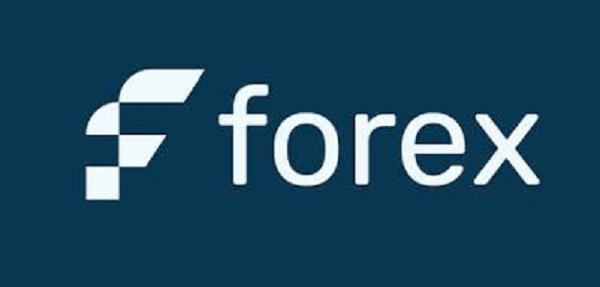
The currency may be stabilized simply by the expectation or rumor of a central bank intervention in foreign exchange. However, violent intervention may often be required in nations with a filthy float currency regime. The goals of central banks are only sometimes met. The market's combined resources can quickly overpower any central bank. Investment Management FirmsInvestment management companies use the forex market to ease transactions in international securities. For instance, an international equities portfolio manager must buy and sell several foreign currency pairs to cover the cost of purchasing foreign assets. Additionally, some investment management companies have more speculative professional currency overlay operations that manage client exposure to foreign currency to increase profits while lowering risks. However, there aren't many of these specialized companies, especially those that handle multiple assets and can make larger deals. Non-Bank Foreign Exchange CompaniesCurrency exchange and overseas payments are services provided by non-bank foreign currency exchange firms to private people and businesses. These are also referred to as "foreign exchange brokers", although they differ in that they facilitate currency conversion with payments rather than currency speculation. According to estimates, about 14% of currency transfers and payments in the UK go through forex corporations. The main selling feature of these businesses is typically their ability to beat the customer's bank on currency fluctuations or payment costs. These businesses stand out from money transfer/remittance businesses because they often provide higher-quality services. Around US $2 billion in transactions are carried out daily in India through Forex Organizations. Still, this does not compete effectively with any established foreign exchange market of worldwide renown. However, the industry is constantly expanding due to the introduction of online foreign exchange companies. Most Traded Currencies by ValueThere is usually no unified, centrally approved market for conducting most deals, and there is hardly any international regulation. Since currency markets operate over-the-counter (OTC), various currency assets are exchanged on several interrelated marketplaces. This suggests several different exchange rates, depending on which bank or market maker deals with and where they are. In actuality, the rates are relatively close owing to arbitrage. The reported price of a given currency is often the London market price because London dominates the market. London and New York City are the primary commercial hubs. However, Tokyo, Hong Kong, and Singapore are significant hubs. Banks from all across the world take part. Currency trading occurs continually throughout the day. Exchange rate variations are typically brought on by both the actual movement of money and the anticipation of such movement. Alterations bring these on in macroeconomic conditions such as GDP growth, inflation, rate of interest, budget and trade imbalances or surpluses, substantial cross-border M&A transactions, and others. Major news stories are often made available to the public on set dates, allowing many people to access them at once. Large banks, however, have a significant advantage since they can track their clients' order flow. Determinants of Exchange Rates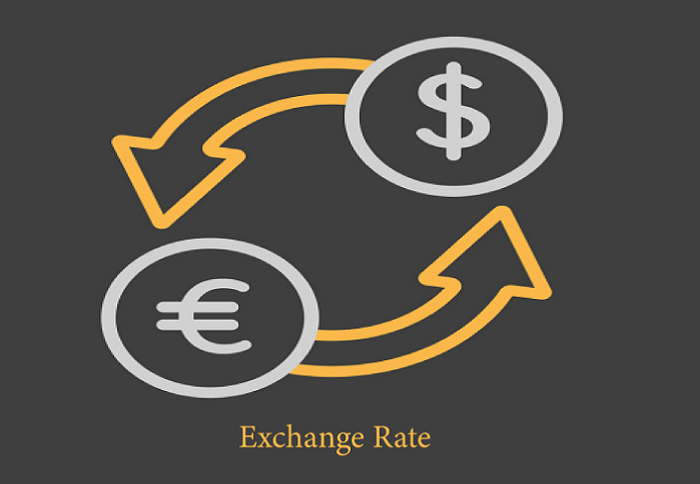
In a system of fixed exchange rates, the government usually sets currency rates. However, in a flexible exchange rate regime, a variety of concepts have been put out to explain (and forecast) exchange rate movements, including:
So far, none of the models created can account for currency exchange and volatility over longer periods adequately. The models discussed above show that various macroeconomic factors influence currency exchange, and demand and availability ultimately determine currency values. However, algorithms may be created to forecast prices for periods of less than a day. The world's currency markets might be likened to a massive melting pot. Amid a vast and ever-changing mixture of recent issues, supply and demand variables are continually altering, and the value of one currency concerning the other is fluctuating. Foreign exchange is the only market that incorporates as much of what is happening in the world at any moment. Any specific currency's demand, supply, and value are affected by several factors rather than just one. These components often fall under three categories: political context, market psychology, and economic context. Economic FactorsGovernment Budget Deficits and Surpluses: The market often responds unfavorably to growing shortfalls and favorably to decreasing deficits. The currency worth of a nation reflects the effect accordingly. Trade Balance: Trade flows between nations show the consumer's needs and wants, which in turn shows the need for a nation's currency to facilitate trade. Trade surpluses and imbalances in goods and services indicate how competitive a country's economy is. For instance, trade imbalances may negatively impact a country's currency. Levels and Patterns of Inflation: A currency will often depreciate if there is substantial inflation in the nation or if inflation rates are growing. This is because inflation reduces purchasing power and, as a result, demand for that specific currency. Nevertheless, as inflation increases, a currency may occasionally gain because of anticipation that the central bank will increase the short-term interest rate to offset the inflationary trend. Economic Growth and Health: Reports on the GDP, employment rates, consumer spending, capacity utilization, and other metrics provide information on how well an economy is doing. Generally, a country's currency will perform better and be in more demand if its economy is robust. Productivity of an Economy: Raising economic growth production should benefit the value of its currency. If growth occurs in the trading sector, its consequences will be more noticeable. Political ConditionsThe state of domestic, regional, and global politics may have a significant impact on financial markets. Political unrest and rumors regarding the next ruling party may affect currency rates in any country. A country's economy may suffer due to political unrest and instability. For instance, the worth of Pakistan and Thailand's currencies may suffer if coalition governments become unstable. The growth of a political movement seen as economically responsible can also negatively impact a nation with financial problems. Additionally, a neighboring nation's currency may be impacted by numerous events in a nearby country, especially those which affect good or adverse interest in that country in the area. Market PsychologyThe foreign currency market is influenced by the market philosophy and trader views in several ways, including: Long-Term Patterns: The forex market frequently follows observable long-term trends. Although unlike commodities, currencies do not have an annual rising season, economic cycles do exist. Cycle analysis helps examine longer-term pricing changes that might result from prevailing political or economic tendencies. "Buy the rumor, sell the fact": This market maxim may be used in various currency scenarios. It is a propensity for the value of a currency to anticipate an action's effects and respond in the exact opposite way when those predictions come true. This is also known as a market that is "oversold" or "overbought". When investors emphasize how external events relate to correlated values, this cognitive preference, called "anchoring", may also be seen in buying the rumor or selling the fact. Economic Data: While economic data can undoubtedly represent the economic strategy, some reports and figures have a talismanic effect, making them crucial to market psychology and perhaps having a direct bearing on short-term market movements. "What to watch" is a subject that may change. For instance, the supply of money, work opportunities, the trade surplus, and the inflation statistics have all received attention in recent years. How does Inflation affect Foreign Exchange Rates?The value of a nation's currency and its interest rates with other economies can be significantly impacted by inflation. The value of a currency and the foreign exchange rate are more likely to be significantly negatively impacted by inflation, even if it is only one of several factors. While a low inflation rate does not ensure a positive exchange rate, a very strong inflation rate is almost certain to have an adverse impact. 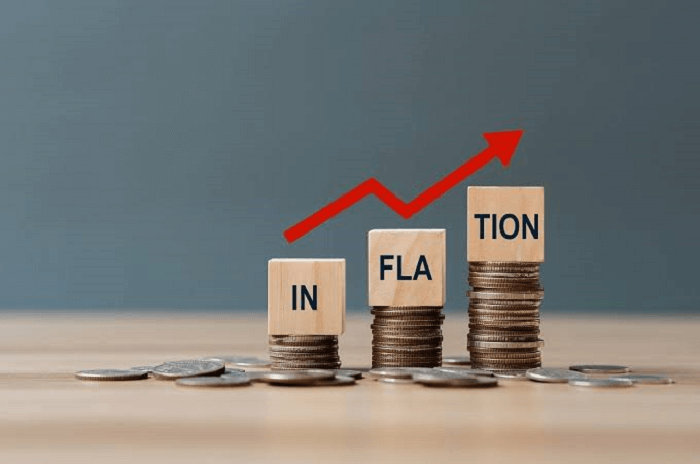
Interest rates and inflation are strongly tied, and interest rates impact exchange rates. Managing the intricate link between the rate of interest and inflation can be challenging for governments that issue their currencies. Low-interest rates encourage consumer spending, economic expansion, and generally beneficial effects on the value of currencies. Hyperinflation may result if consumer spending rises and demand eventually outpaces supply, which is sometimes bad. However, as opposed to greater interest rates, low-interest rates typically fail to entice international investment. Increased demand for a nation's currency will likely result from greater interest rates, drawing in more foreign investment. |
 For Videos Join Our Youtube Channel: Join Now
For Videos Join Our Youtube Channel: Join Now
Feedback
- Send your Feedback to [email protected]
Help Others, Please Share









